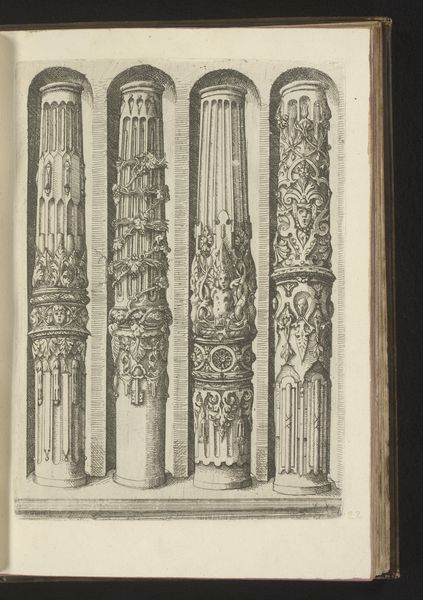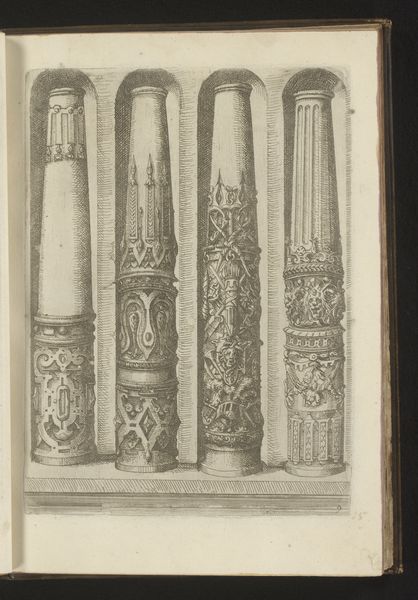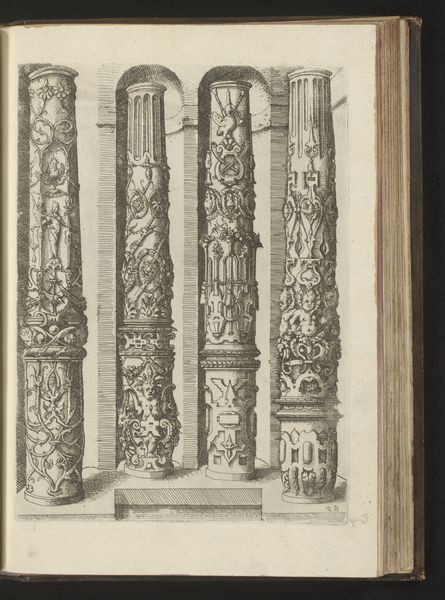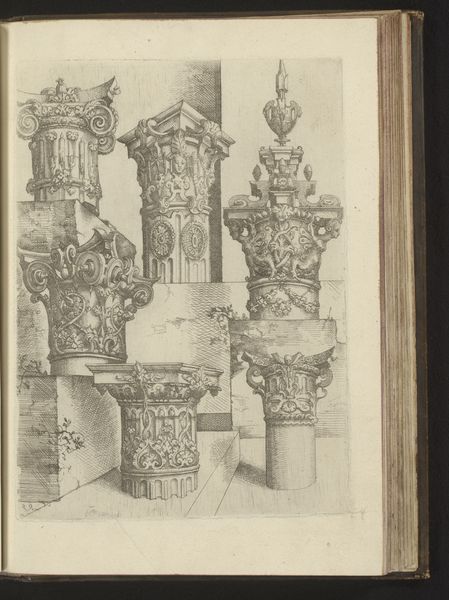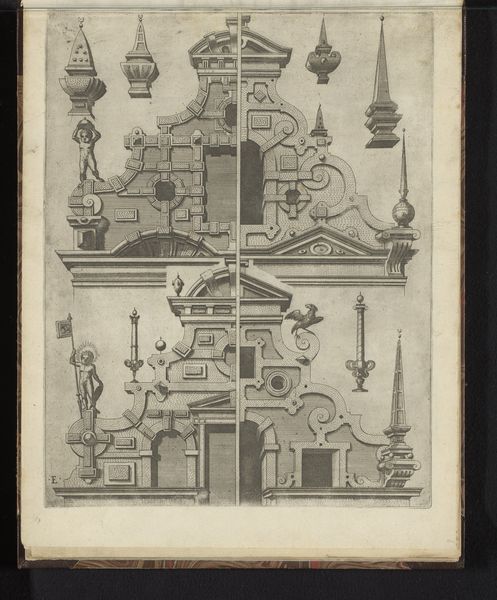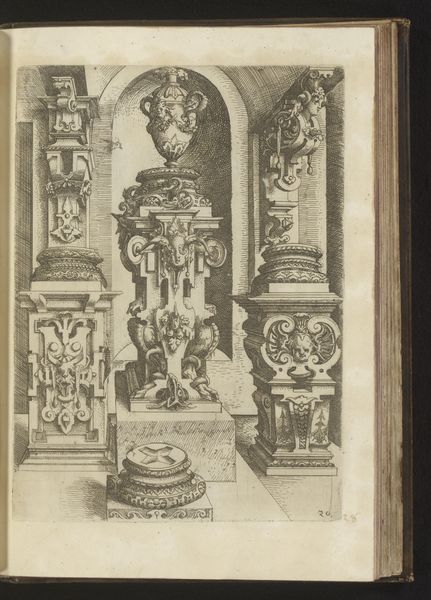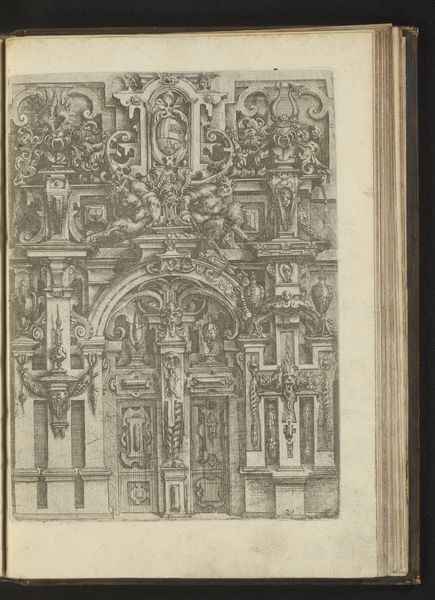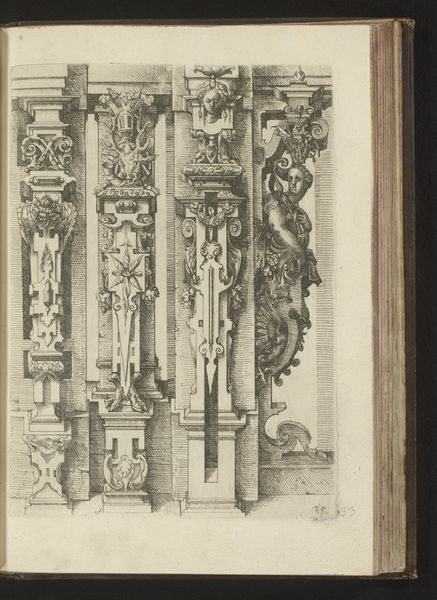
drawing, ink, pen, architecture
#
drawing
#
classical-realism
#
form
#
11_renaissance
#
ink
#
geometric
#
column
#
pen-ink sketch
#
line
#
pen
#
history-painting
#
architecture
Dimensions: height 251 mm, width 183 mm
Copyright: Rijks Museum: Open Domain
Editor: So, this drawing, “Drie zuilen met rustica uit de Toscaanse orde” by Wendel Dietterlin, dates to between 1593 and 1595. It's ink on paper and depicts three incredibly ornate columns. I find the level of detail striking – almost overwhelming! What's your interpretation of it? Curator: This drawing isn’t just about architectural representation; it's a window into the anxieties and power structures of the late Renaissance. Think about what columns *symbolize*: strength, stability, order. Dietterlin distorts and overwhelms these symbols with excessive ornamentation. Editor: Distorts them how? Curator: By turning them into almost grotesque displays of wealth and status. The “rustica” style, usually meant to convey strength through rough, unfinished surfaces, becomes an exercise in elaborate artifice. He's exaggerating classicism. Doesn’t this tension between the ideal and the real resonate with the social anxieties of the time: religious conflict, the rise of merchant power, questioning of established norms? Editor: So, it’s not just showing columns, but critiquing the values they represent? The excessive ornamentation becomes a symbol of, say, moral decay? Curator: Precisely. It's about how power uses – and abuses – aesthetics to legitimize itself. And what about the Tuscan order itself? Known for its simplicity and association with the land. By smothering it with decoration, is Dietterlin commenting on the distancing of the elite from the realities of everyday life? Editor: I never would have seen that just by looking at it! Now it feels like there’s a whole other layer of meaning. Curator: Art so often exists within complex webs of social and political discourse; seeing it is only the beginning. This drawing encourages us to critically examine what seems 'normal' or 'beautiful'. Editor: It makes me rethink how architecture operates as a language of power. Thanks!
Comments
No comments
Be the first to comment and join the conversation on the ultimate creative platform.
